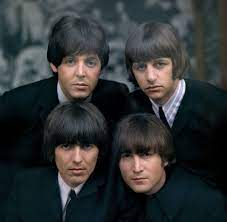Reflecting on the Canonicity of Bob Dylan
The artist in rock and roll history who has the most
literary significance, and perhaps the artist who is the most responsible for
moving forward the boundaries of artistic expression in English-speaking
culture in the rock and roll era, is Bob Dylan. He grew up in Minnesota and
came to New York City in the early years of a cultural revolution and began
integrating himself into a folk music tradition that was increasingly indebted
to rock music as it pushed itself to the popular consciousness. His songwriting
is potent and features an insistence on running back and forth between the
interpersonal and the political. In that expressive space, he opened up a way
for Americans to consider how their personal lives and their yearnings fit into
a bigger picture in our changing landscape.
One other major feature in assessment of the canonicity of
Bob Dylan as a primary figure in rock music history and rock influence is his
enigmatic image. That is where he shows his greatest relationship to Elvis, in
my opinion. Where Elvis carried the “Mystery Train” of the rock star to the
public imagination, Bob ran further with that concept and toyed at times with
avant-gardism and maximalism, confrontational public statements and murky lyrics.
He has been, for the past sixty years, contributing to an ever-growing
catalogue that often is baffling and surprising while maintaining artistic
throughlines that allow his body of work to make a handful of coherent
statements about late capitalism and anxiety.
Bob got into the concept of the rock album fairly early in
his career, and became one of a handful of rock artists who established the
album as the primary vehicle for rock expression as the genre matured in the
global force that it was in the 1970s and 1980s. He is a singles artists’
singles artist, too, releasing a number of major top ten hits in the wild times
of 1960s rock/pop radio. One of them, “Like a Rolling Stone,” inspired a number
of younger singer-songwriters while also breaking the unremarkable rule that a
hit single had to be under three minutes long.
Then there are the amazing turns of phrase in highlights
like “It’s Alright, Ma (I’m Only Bleeding),” “The Times They Are a-Changin’,” “I
Shall Be Released,” and “Shelter from the Storm,” and the inflections in his
unique voice that make an album unmistakably a Dylan album. His artistry as a
guitarist, as a poet, as an actor, and as a frontman could be, in each case,
the topic of another long essay. I have taken a long time to relax and roam
about in the expanses of his albums in my 41 years of life, and there are those
who have taken a lot more time than me to analyze his writing and his creativity.
There are few other musicians, from any time in modern history, who have been
the topic of a body of analytical and critical work as large as the body of
written work about Bob Dylan.
The concept of the singer-songwriter predates Bob, and one
could make a good argument that a few of the 1950s rock and roll stars who
write their own material have been influences on his writing, but the concept
of the singer-songwriter has been permanently changed as a result of his huge longtime
influence. In the past 20 years or so, his writing has put forth an argument
that aging and rock and roll can coexist in creative and surprising ways, featuring
echoes of the prominence of wise older folks in the blues and tall tale
traditions that he had been drawing on since his fresh-faced-but-yet-angry New
York City debut in the folk scene that he got into. For a 2020 list, I controversially
ranked Bob at #2 ahead of The Beatles, and though I’ve put his overview one
position lower here, one could still make an argument that he belongs higher,
and it would be very tough to reposition his work out from the top 10.
Biographical Information: born on 5/24/1941 in Duluth,
Minnesota
Chart History:
·
Hot 100 singles in Billboard: 23
·
Top 40 singles in Billboard: 12
·
Top 10 singles in Billboard: 4
·
#1 singles in Billboard: none
·
Top 200 albums in Billboard: 72
·
Top 100 singles in Cashbox: 23
·
Monthly listeners on Spotify on 6/20/2022: 8,725,189
RIAA Certifications: 5+ Platinum certifications, 5+
Multi-Platinum certifications
Halls of Fame: Rock and Roll Hall of Fame (1988)
Total Releases: 99 albums, 272 singles and
EPs, 286 compilations, 28 videos
Major Awards: 10 Grammys and Lifetime Achievement
Award


Comments
Post a Comment